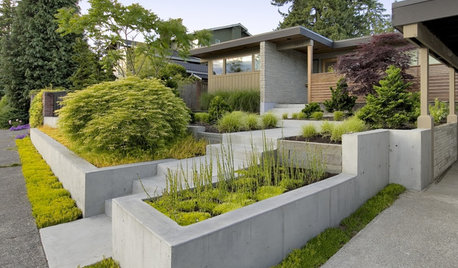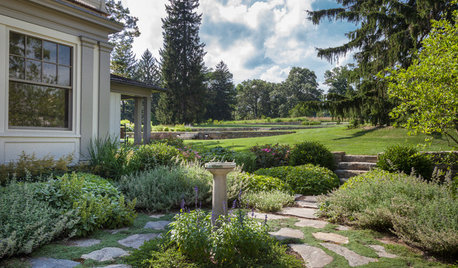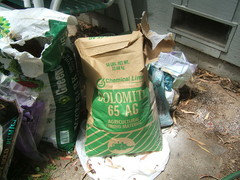Accidentally used hydrated agricultural lime - how to fix this?
solid7
9 years ago
Featured Answer
Sort by:Oldest
Comments (42)
greenman28 NorCal 7b/8a
9 years agojohns.coastal.patio
9 years agoRelated Professionals
Maple Valley Landscape Architects & Landscape Designers · Bergenfield Landscape Contractors · Bowie Landscape Contractors · Cary Landscape Contractors · Chesapeake Ranch Estates Landscape Contractors · Duarte Landscape Contractors · Wilsonville Landscape Contractors · Greenville Solar Energy Systems · South Whittier Solar Energy Systems · Eagle River Window Contractors · Glen Burnie Window Contractors · Sunrise Window Contractors · Galveston Fence Contractors · Lorton Fence Contractors · Tempe Fence Contractorssolid7
9 years agojohns.coastal.patio
9 years agoOhiofem 6a/5b Southwest Ohio
9 years agojohns.coastal.patio
9 years agosolid7
9 years agojohns.coastal.patio
9 years agoVWFeature
9 years agomckenziek
9 years agoOhiofem 6a/5b Southwest Ohio
9 years agojohns.coastal.patio
9 years agosolid7
9 years agoOhiofem 6a/5b Southwest Ohio
9 years agosolid7
9 years agogreenman28 NorCal 7b/8a
9 years agosolid7
9 years agoseysonn
9 years agosolid7
9 years agogreenman28 NorCal 7b/8a
9 years agoOhiofem 6a/5b Southwest Ohio
9 years agodrew51 SE MI Z5b/6a
9 years agosolid7
9 years agogreenman28 NorCal 7b/8a
9 years agogreenman28 NorCal 7b/8a
9 years agodrew51 SE MI Z5b/6a
9 years agogreenman28 NorCal 7b/8a
9 years agohairmetal4ever
9 years agoOhiofem 6a/5b Southwest Ohio
9 years agojohns.coastal.patio
9 years agohairmetal4ever
9 years agosolid7
9 years agomckenziek
9 years agogreenman28 NorCal 7b/8a
9 years agosolid7
9 years agomckenziek
9 years agosolid7
9 years agoOhiofem 6a/5b Southwest Ohio
9 years agosolid7
9 years agoJames Garner
6 years agomblan13
6 years ago
Related Stories

GRASSESHow to Rock a Lawn
Weekend Project: The key to healthy grass begins with the soil. If turf works for you, here’s how to fix it and keep it looking its best
Full Story
LANDSCAPE DESIGNGarden Walls: Pour On the Style With Concrete
There's no end to what you — make that your contractor — can create using this strong and low-maintenance material
Full Story
EDIBLE GARDENSNatural Ways to Get Rid of Weeds in Your Garden
Use these techniques to help prevent the spread of weeds and to learn about your soil
Full Story
TRADITIONAL HOMESHouzz Tour: Connecticut Farm Restored for Generations to Come
A man renovates his extended family’s stately farmhouse and land. Sustainable practices are used in gardens, wetlands and recreation areas
Full Story
HOUSEKEEPINGTackle Big Messes Better With a Sparkling-Clean Dishwasher
You might think it’s self-cleaning, but your dishwasher needs regular upkeep to keep it working hard for you
Full Story
KITCHEN COUNTERTOPS7 Low-Maintenance Countertops for Your Dream Kitchen
Fingerprints, stains, resealing requirements ... who needs ’em? These countertop materials look great with little effort
Full Story
GREEN BUILDINGHouzz Tour: Passive House in Vermont Slashes Heating Bills
Its ecofriendly, low-maintenance design leaves a family with more time to relax and enjoy the weekend home
Full Story
FUN HOUZZDon’t Be a Stickybeak — and Other Home-Related Lingo From Abroad
Need to hire a contractor or buy a certain piece of furniture in the U.K. or Australia? Keep this guide at hand
Full Story
FEEL-GOOD HOME21 Ways to Waste Less at Home
Whether it's herbs rotting in the fridge or clothes that never get worn, most of us waste too much. Here are ways to make a change
Full Story
GARDENING GUIDESGarden Myths to Debunk as You Dig This Fall and Rest Over Winter
Termites hate wood mulch, don’t amend soil for trees, avoid gravel in planters — and more nuggets of garden wisdom
Full Story








solid7Original Author